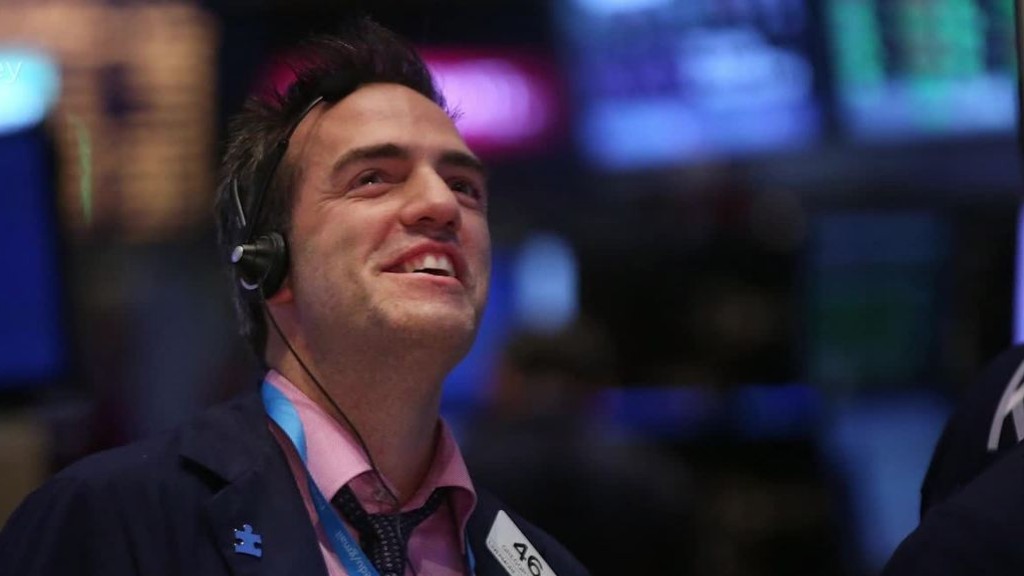
Don't believe all of the economic gloom and doom.
Yes, the American economy ran into some rough seas during the first quarter, with growth grinding to a halt. On Friday, the government is set to release revised data that could even show the economy contracted in the first three months of the year.
But here's some good news: A rebound is under way. A bunch of indicators released in recent days offer hope that the first quarter was mostly just weather-fueled turbulence and the result of other temporary factors.
"I think growth is bouncing back after that weak first quarter. Things are looking much better for the second quarter," said Gus Faucher, senior macroeconomist at PNC Financial.
While evidence of an economic rebound concerns Wall Street because it could speed up the Federal Reserve's first interest rate hike in nearly a decade, it should be reassuring for everyday Americans.
Related: Fastest growing U.S. cities: Texas is king
Housing rebounds as weather improves: The renewed confidence is being fueled by upbeat reports on various sectors of the economy. For example, home building ramped up big time in April. The government said housing starts surged 20.2%, marking the biggest increase since 1991 and returning activity to pre-crisis levels.
That impressive number is a key piece of evidence bolstering the case of those who believe first-quarter growth was chilled by severe winter weather.
Likewise, a report released this week shows that new home sales ticked higher in April and the median price of a new home rose for the first time in five months.
Related: House hunting horror stories
Businesses, consumers bounce back: It's not just the real estate market showing signs of life. Even business investment is looking stronger. Orders of non-transportation durable goods rose in April, marking the second consecutive month of increases following a recent slump.
"Business investment, one of the key elements of the economy, is coming back," Brad McMillan, chief investment officer at Commonwealth Financial Network, wrote in a note to clients.
Consumers may not be spending much, but they seem to be feeling pretty good lately. Thanks to the stronger jobs market, consumer confidence ticked up in May more than economists had predicted.
"Consumer financial health is in very good shape. I don't think there's any reason to believe the American consumer has become a saver rather than a spender," said Russell Price, senior economist at Ameriprise Financial.
Related: Stocks leave consumers in the dust. Can it last?
Is Q1 GDP even accurate anyway? The first quarter was also hurt by some temporary problems such as the West Coast port strike, which made it difficult to ship goods into and out of the U.S.
The port strike helped cause gross domestic product growth to slow to an anemic pace of just 0.2% in the first quarter. Many economists believe GDP, the broadest measure of economic activity, will ultimately be revised into negative territory when it's released later this week.
Investors are starting to question the accuracy of the government's first quarter GDP figures. They are consistently much weaker than the rest of the year, even after the seasonal adjustments that are supposed to correct for winter issues. The Bureau of Economic Analysis, the agency in charge of calculating GDP, recently said it's aware of potential issues in its first-quarter growth figures and is looking into possibly fixes.
Related: Fastest-growing U.S. cities: Texas is king
Rebound unlikely to top 2014's: Of course, the jury is still out on the second quarter. While recent reports suggest growth may be back on track, the quarter still has another month to go and turbulence could return.
Even if the second quarter rebounds, few predict the economy will go gangbusters. In fact, Price believes the comeback will be much tamer than last year's because the stronger U.S. dollar hurts exports by making goods sold overseas more expensive.
Rate hike jitters: Still, investors are clearly aware of the better economic outlook. Stocks tumbled on Tuesday amid concerns the Fed will soon be able to lift interest rates from their emergency-low levels, making equities look less attractive in the process.
Much debate remains over precisely when the Fed will finally raise rates. A June hike looks unlikely but some believe September is a real possibility.
What's clearer is that stocks will continue to experience turbulence as they price in shifting economic scenarios. Just look at how the Dow raced about 100 points higher on Wednesday.
"We anticipate considerable market volatility as rate hikes approach and investors reassess the outlook for the markets in a less accommodative environment," Emma Dinsmore, CEO of R-Squared Macro Management, wrote in a note to clients.



